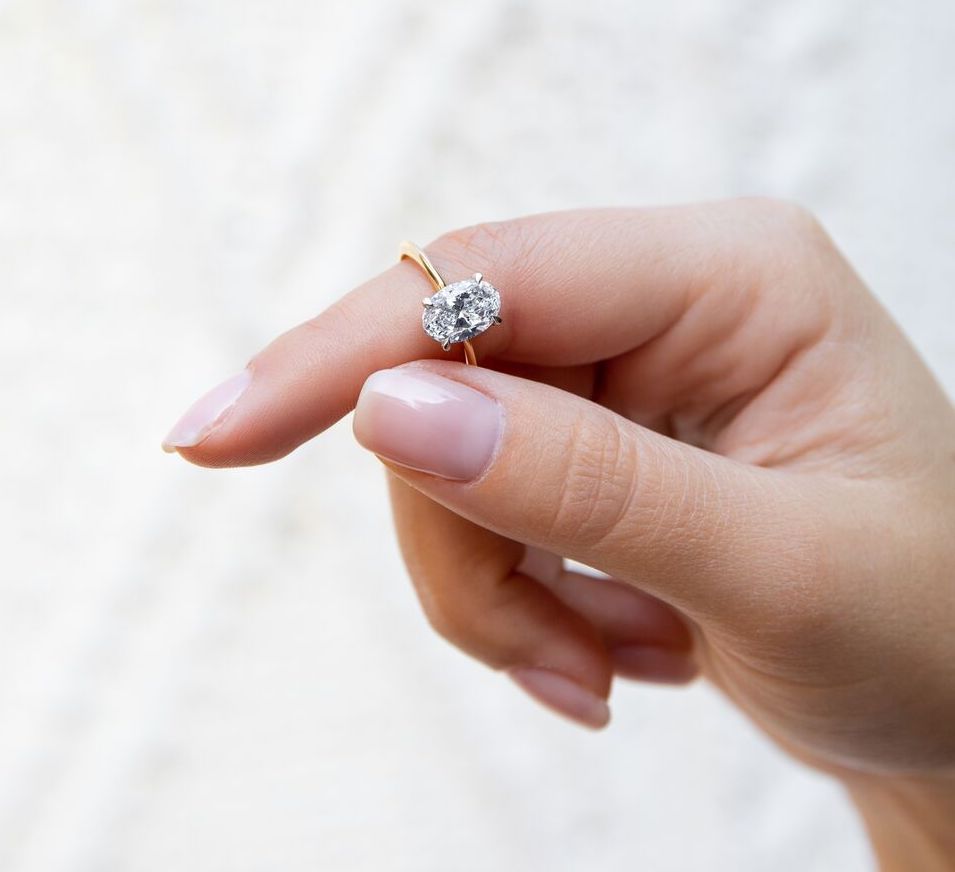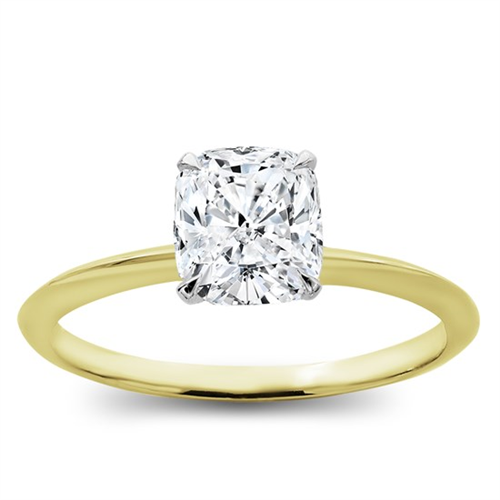Most engagement rings of today tend to follow the ‘bigger is better’ mentality. It’s all about who has the largest diamonds or the widest and most intricate band. And while rings like this are certainly captivating, these vast designs can also make your ring look a little too crowded, especially on dainty fingers. And honestly, some people just crave a brush of minimalism on their engagement rings instead of opting for the more extravagant styles. For this reason, today, we wanted to talk a little bit about thin band engagement rings. This is a unique style that has been growing in popularity in recent years and it’s time we talk about why. We’re going to go over what they are, some misconceptions on this style, and a few pros and cons of this ring design to help you pick the best engagement ring for your sweetheart.
What is a Thin Band Ring?
To start, a thin band engagement ring can best be described as, well, a ring with a thinner band. To give you some perspective, thin bands typically fall in the range of 1.6mm to 2mm wide while the average engagement ring width in comparison falls between 3 and 6 mm. This means that these rings are significantly smaller than your typical engagement ring. However, just because they are smaller doesn’t mean they aren’t as luxurious.
Contrary to popular belief, none of the ring’s characteristics are actually compromised despite their smaller size. Instead, think of it as the ring being more compact to send a bigger message in a smaller space (which we adore). However, characteristics aside, there are definitely a few things that you can’t do with a ring with a smaller band. Let’s compare a few pros and cons to give you better insight.
Pros and Cons of Thin Band Engagement Rings
Now as with anything, there are some highs and some lows. To give you a better perspective, we’ve compiled a list of the biggest pros and cons of thin band engagement rings that you should consider before you buy. Let’s go over them.
Pros:
- The first pro of thin band engagement rings is that they are less expensive. Statistically speaking, thin band engagement rings tend to cost less than thicker bands. This is because they tend to use up less metal, jewels, and material overall. Of course, we understand that the price isn’t the main factor of buying an engagement ring, but saving money and finding the perfect ring all in one is definitely a plus!
- Next, thin band engagement rings are also traditionally more comfortable than larger banded rings. This ultimately has to do with the size, weight, and where it sits on your finger overall. Of course, we can’t speak for all rings or comfort levels, as it is entirely up to personal preference. However, since a wedding ring is something you’re committing to wearing the rest of your life, you definitely want to choose something comfortable for your partner. Therefore, this ring style is good to keep in mind when browsing.
- And lastly, thin band rings naturally help to enhance the center stone for a more lavish look. Take this classic cathedral engagement ring, for example. This elegant solitaire engagement ring sits on a 1.5MM band. And while this particular solitaire isn’t considered small, it catches your eye as if it was twice its size. This is because, in contrast, any size stone will look large set against a thin band. Not to mention, a small band helps to accentuate its alluring and divine features. Therefore, no matter the jewel size, rest assured it will stand out unlike any other against a thin band.
Cons:
- Moving onto our list of cons, the first con of thin band rings is that they are not very strong. This makes them prone to bending under pressure as their petite size may not be able to withstand it. Of course, you do have to be pretty rough with the band in order to bend it. However, this is definitely something to consider beforehand if your partner works a lot with their hands.
- The next con is that thin band rings don’t typically suit larger hands. If your partner has fingers on the larger side, a thin band may look disproportionate in comparison. Therefore, you may want to choose a larger banded instead ring to flatter their hand.
- And lastly, the biggest con is that there are very limited setting options for thin band rings. For example, pave settings are more difficult to apply on a thin band, as there’s less space to work with. However, that’s not to say you can’t add exquisite textures to a thin banded ring. This is evident in our thin band engagement ring collection full of a variety of unique styles and designs. Although, because this is more add to a smaller band, the cost may rise if you are getting a ring designed. Therefore, if your partner is expecting a ring dressed to the nines, it may be best to opt for a larger band in the end.

In conclusion, thin band engagement rings are a beautiful accessory to any hand. But just like any style, they have their fair share of highs and lows to consider. In the end, an engagement ring is never about the size of the jewel or the width of the band, but about finding a ring to reflect your unique love for someone special. Whether that’s a thin band or not, we hope this article has helped to give you better insight into what the best ring choice is for your soulmate so that you may carrying on to create a love that will truly last a lifetime.


